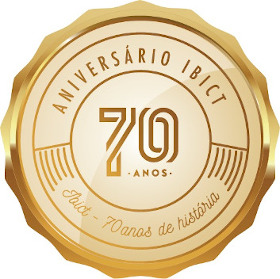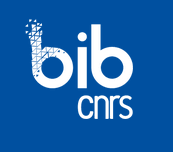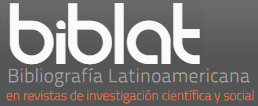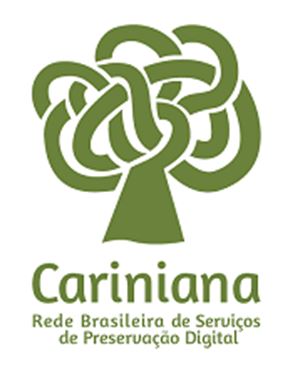Semi-automatic assessment of ICT Master Plan contents with Natural Language Processing technologies
DOI:
https://doi.org/10.18225/ci.inf.v52i2.7091Palabras clave:
natural language processing, text mining, semantic evaluation of ICT master plansResumen
This paper presents the results of a research on searching and semi-automatic assessment of interesting textual content on the Information and Communication Technology Master Plans published by a significant sample of Union’s government agencies. Using natural language processing technologies, it was retrieved useful information and made interesting discoveries from the documents of the plans for assessment of the state-of-the-art on ICT in the agencies, some of which having caused surprise (due to serendipity), such as the demand management model in some units based on estimates of the teams’ delivery capacity. It is concluded that the plans are in compliance with the official standards, including the observed interest of most agencies in current management issues, such as governance and risk management, and maturity in the assessment of market fads, but also is evident that its contents still lack approaches on some important ICT management practices to guide its technical evolution.
Descargas
Referencias
ABRAMS, C.; SCHULTE, R. W. Service-oriented architecture overview and guide to SOA research. [s. l.]: Gartner Group, 2008.
BATISTA, V.; AZEVEDO, A.; HESSEL, R. Força-tarefa contra filas no INSS ganha reforço. Correio Braziliense, Brasília, 17 jan. 2020. Economia, p. 7.
BELL, M. Service-oriented modeling: service analysis, design, and architecture. New Jersey: Wiley, 2008. ISBN 0470141115.
BRASIL. Decreto-lei nº 200, de 25 de fevereiro de 1967. Dispõe sobre a organização da Administração Federal, estabelece diretrizes para a Reforma Administrativa, e dá outras providências. Presidência da República, Brasília, 1967.
BRASIL. Decreto-lei nº 7.579, de 11 de outubro de 2011. Dispõe sobre o Sistema de Administração dos Recursos de Tecnologia da Informação - SISP, do Poder Executivo federal. Presidência da República, Brasília, 2011.
BRASIL. Ministério do Planejamento, Orçamento e Gestão. Guia de elaboração de PDTI do SISP: Versão 1.0. Brasília: MPOG, 2012. Available at: http://www.sisp.gov.br/.../Guia_de_Elaboração_de_PDTI_v1.0...pdf. Access on: 2 jan. 2020.
BRASIL. Tribunal de Contas da União. Acórdão nº 2608/2018-TCU-Plenário. Lei 13.707/2018, art. 124. Relatório de políticas públicas elaborado com objetivo de subsidiar o Congresso Nacional na elaboração da Lei Orçamentária. Acórdão 2127/2017-Plenário. Monitoramento. Adoção de diversas medidas, por parte do Poder Executivo, para atender às recomendações. Oportunidade de melhorias. Recomendações aos órgãos mencionados e a unidades deste Tribunal. Brasília: Tribunal de Contas da União, 2018. Available at: https://pesquisa.apps.tcu.gov.br/#/documento/acordao- .... Access on: 25 out. 2020.
BRASIL. Tribunal de Contas da União. Acórdão nº 1603/2008-TCU-Plenário. Levantamento de auditoria. Situação da governança de Tecnologia da Informação – TI na Administração Pública Federal. Ausência de Planejamento Estratégico Institucional. Deficiência na estrutura de pessoal. Tratamento inadequado à confidencialidade, integridade e disponibilidade das informações. Recomendações. Brasília: Tribunal de Contas da União, 2008. Available at: https://pesquisa.apps.tcu.gov.br/#/resultado/acordao-completo/. Access on: 25 out. 2020.
CONEGLIAN, C. S.; SEGUNDO, J. E. S. Inteligência artificial e ferramentas da web semântica aplicadas a recuperação da informação: um modelo conceitual com foco na linguagem natural. Informação e Informação, Londrina, v. 27, n. 1, p. 625–651, jan./mar. 2022. Available at: https://ojs.uel.br/revistas/uel/index.php/informacao/article/view/44729. Access on: 9 dez. 2023.
COSTELO, K. The Evolution of Enterprise Architecture. Gartner Group, 2019. Available at: https://www.gartner.com/smarterwithgartner/the-evolution-of-enterprise-architecture/. Access on: 2 jan. 2020.
CRAWLEY, E. Introduction to system architecture: architecture to value. Lecture Notes. Massachusetts: MIT, 2007. Available at: https://ocw.mit.edu/courses/engineering-systems-division/esd-34-system-architecture-january-iap-2007/lecture-notes/lec1.pdf. Access on: 21 jan. 2020.
FALCÃO, L. C. J.; LOPES, B.; SOUZA, R. R. Absorção das tarefas de processamento de Linguagem Natural (NLP) pela Ciência da Informação (CI): uma revisão da literatura para tangibilização do uso de NLP pela CI. Em Questão, Porto Alegre, v. 28, n. 1, p. 13-34, jan/mar. 2022. Available at: https://seer.ufrgs.br/EmQuestao/article/view/111323/64623. Access on: 9 dez. 2023.
GARTNER GROUP. Gartner glossary: enterprise architecture. [s. l.]: Gartner Group, 2020a. Available at: https://www.gartner.com/en/information-technology/glossary/enterprise-architecture-ea. Access on: 2 jan. 2020.
GARTNER GROUP. Gartner Glossary: Service-oriented Architecture (SOA). [s. l.]: Gartner Group, 2020b. Available at: https://www.gartner.com/en/information-technology/glossary/service-oriented-architecture-soa. Access on: 22 jan. 2020.
HERMANS, P. The zachman framework for architecture revisited: on conceiving the informational enterprise. Semiosis, [s. l.], p. 1-18, 2015.
KAO, A.; POTEET, S. R. (ed.). Natural language processing and text mining. London: Springer, 2007.
KONCHADY, M. Text mining application programming. Massachusetts: Charles River Media, 2006.
KOTUSEV, S. Enterprise architecture: what did we study? International Journal of Cooperative Information Systems, [s. l.], v. 26, n. 4, 2017. Available at: https://www.academia.edu/36770941/Enterprise_Architecture_What_Did_We_Study. Access on: 24 out. 2020.
KOTUSEV, S. The history of enterprise architecture: an evidence-based review. Journal of Enterprise Architecture, [s. l.], v. 12, n. 1, p. 29-27. 2016. Available at: https://www.researchgate.net/publication/308936998_The_History_of_Enterprise_Architecture_An_Evidence-Based_Review/link/.../download. Access on: 24 out. 2020.
LIMA-MARQUES, M.; MACEDO, F. L. O. Arquitetura da Informação: base para a gestão do conhecimento. In: TARAPANOFF, K. (org.). Inteligência, Informação e Conhecimento. Brasília: UNESCO: IBICT, 2006, p. 241-255.
MEADOW, C. T.; BOYCE, B. R.; KRAFT, D. H.; BARRY, C. Text information retrieval systems. 3. ed. [s. l.]: Elsevier, 2007.
NICOLAIDOU, M.; TSADIMAS, A.; ALEXOPOULOU, N.; ANAGNOSTOPOULOS, D. Employing Zachman Enterprise Architecture Framework to Systematically Perform Model-Based System Engineering Activities. In: PROCEEDINGS OF THE 42ND HAWAII INTERNATIONAL CONFERENCE ON SYSTEM SCIENCES 2009, 42., 2009, Havaí. Anais […] Hawaii: HICSS, 2009.
ROSS, J. W.; WEILL, P.; ROBERTSON, D. C. Arquitetura de TI como estratégia empresarial. Tradução Roger Maioli dos Santos. São Paulo: M. Books, 2008.
SCOTT, M. WordSmith Tools Manual. Version 7.0. Stroud: Lexical Analysis Software Ltd., 2019.
WURMAN, R. S. Information architects. New York: Graphis, 1997.
ZACHMAN, J. A. The concise definition of the zachman framework. [s. l.], Zachman International, 2008.
ZACHMAN, J. A. A framework for information systems architecture. IBM Systems Journal, [s. l.], v. 26, n. 3, 1987, p. 276-292.
Descargas
Publicado
Número
Sección
Licencia
Derechos de autor 2024 Ethel Airton Capuano

Esta obra está bajo una licencia internacional Creative Commons Atribución-CompartirIgual 4.0.
- La publicación se reserva el direcho de realizar, en los originales, cambios de orden normativa, ortográfica y gramatical, para mantener la norma culta del idioma, respetando el estilo de los autores;
- Las pruebas finales no seran enviadas a los autores;
- Los trabajos publicados pasan a ser propriedad de la revista Ciência da Informação, siendo su reimpresión total o parcial, sujeta a autorización expresa de la dirección del IBICT;
- Debe ser consignada la fuente de publicação original;
- Són de exclusiva responsabilidad de los autores las opiniones emitidas en sus artículos;
- Cada autor recibirá dos ejemplares de la revista, caso esté disponible en el formato impreso.




























